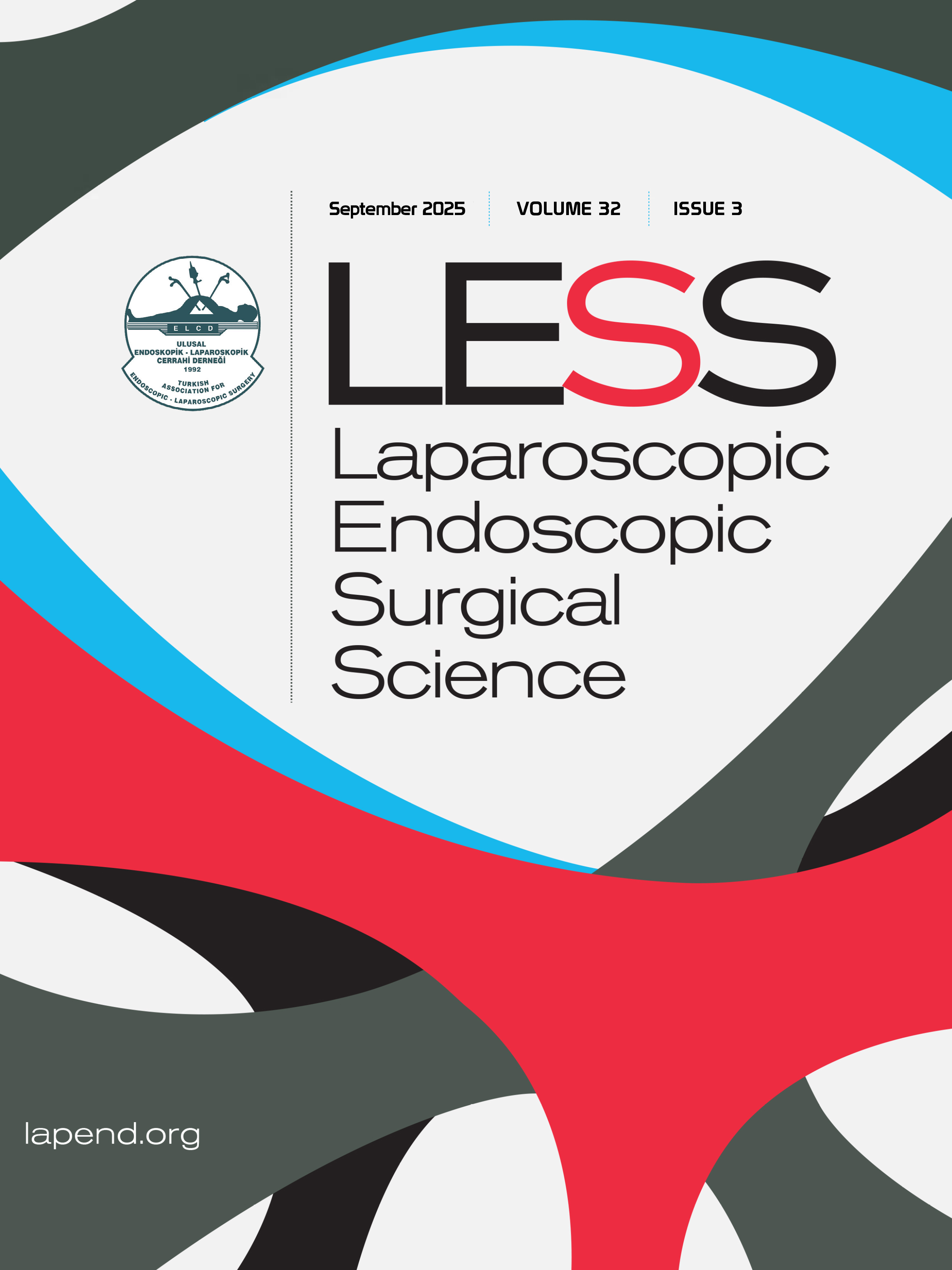Evaluation of changes in posterior segment parameters and cardiovascular risk score following laparoscopic sleeve gastrectomy in obese patients
Ulviye Kıvrak1, Mehmet Karahan2, Ismail Ertuğrul2, Ömer Faruk Boğazlıyan1, Müjgan Kaya Tuna3, Yiğit Şenol4, Nazlı Hacıağaoğlu51Department of Ophthalmology,University of Health Sciences, Kartal Lütfi Kırdar City Hospital, Istanbul, Türkiye2Department of General Surgery, University of Health Sciences, Kartal Lütfi Kırdar City Hospital, Istanbul, Türkiye
3Department of Family Medicine, Çiftehavuzlar Intermed Polyclinic, Istanbul, Türkiye
4Department of Public Health, Afyonkarahisar Provincial Health Directorate, Afyonkarahisar, Türkiye
5Department of Family Medicine, University of Health Sciences, Kartal Lütfi Kırdar City Hospital, Istanbul, Türkiye
INTRODUCTION: To investigate the effects of laparoscopic sleeve gastrectomy (LSG) on body mass index (BMI), visceral adipose index (VAI), waist circumference (WC), cardiovascular risk score, and retinal microvascular and neurogenic changes in obese patients.
METHODS: This retrospective study included 30 obese patients and 40 age- and sex-matched control subjects. Comprehensive systemic and ophthalmic examinations, including posterior segment parameters preoperatively and at six months postoperatively, were obtained for all participants. Data on BMI, VAI, and WC were collected from patient records. The Framingham Risk Score (FRS) was calculated both preoperatively and six months postoperatively.
RESULTS: The study indicated a significant reduction in BMI, VAI, WC, and FRS post-surgery (p=0.015, p=0.001, p=0.035, p<0.001, respectively). Retinal assessments revealed thinner temporal quadrant central macular thickness (CMT) and nasal quadrant peripapillary retinal nerve fiber layer (RNFL), as well as reduced vascular densities in all quadrants of the superficial capillary plexus (SCP), except for the fovea, and in the superior, temporal, and nasal quadrants of the deep capillary plexus (DCP) compared to the control group preoperatively, with improvements noted in temporal quadrant RNFL and nasal quadrant SCP post-surgery. Significant negative correlations were observed between VAI and subfoveal choroidal thickness (SCT), between WC and both superior quadrant MT and SCT, and between FRS and both temporal quadrant RNFL and nasal choriocapillaris vascular density.
DISCUSSION AND CONCLUSION: These findings suggest that LSG not only facilitates weight loss but also positively impacts retinal neurogenic and microvascular health, highlighting potential predictive markers for future cardiometabolic risks in obese patients.
Keywords: Body mass index (BMI), laparoscopic sleeve gastrectomy, optic coherence tomography, optic coherence tomography angiography, the framingham risk score (FRS), visceral adipose index (VAI), waist circumference (WC).
Manuscript Language: English















